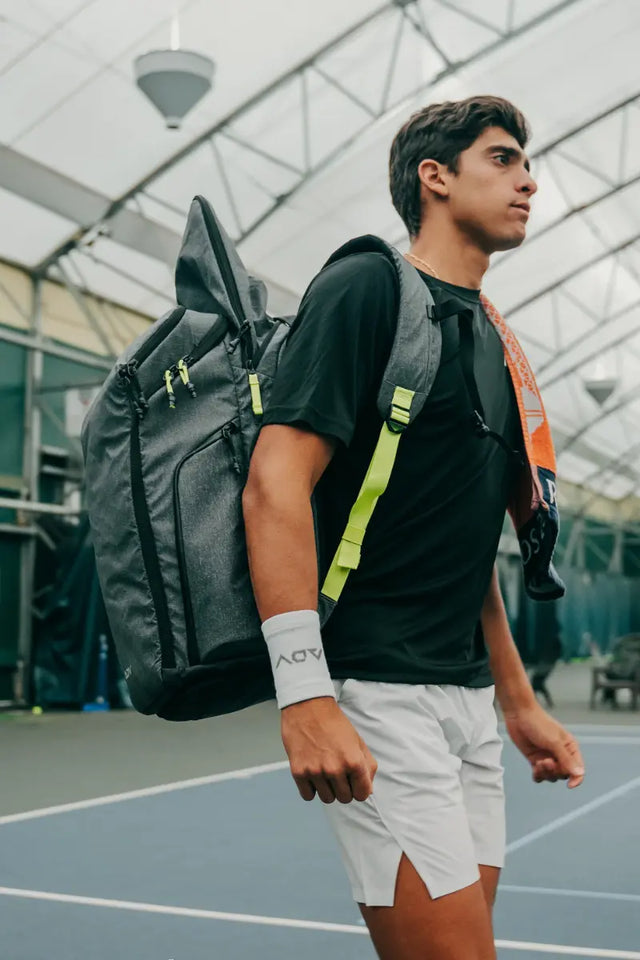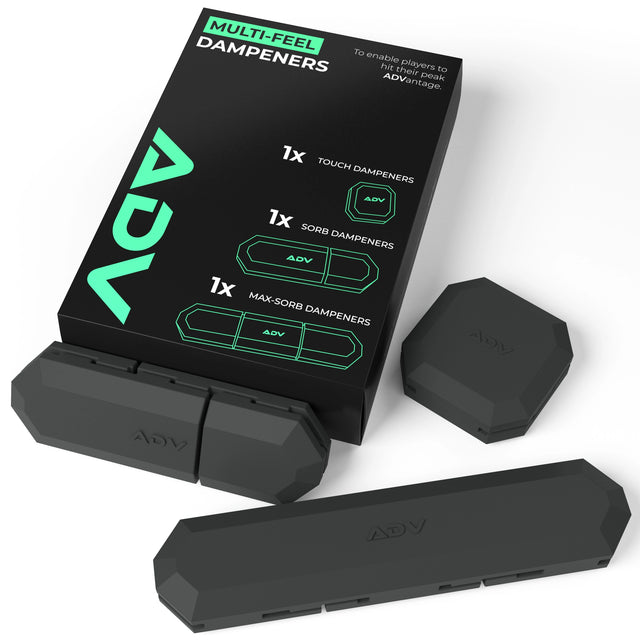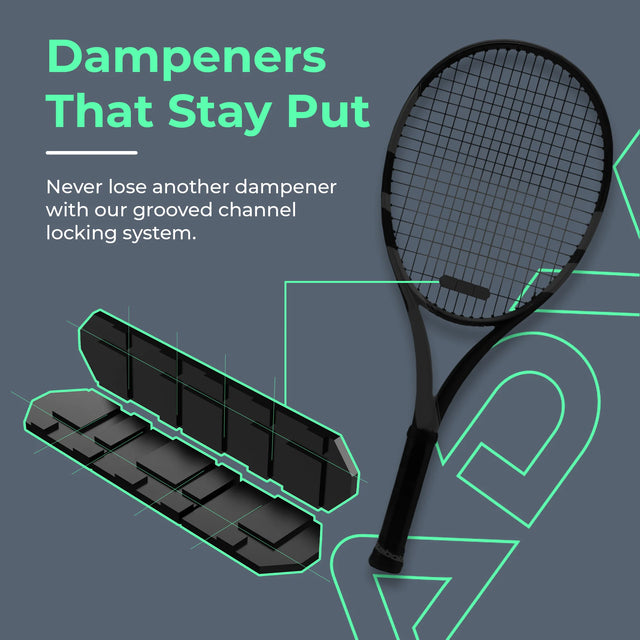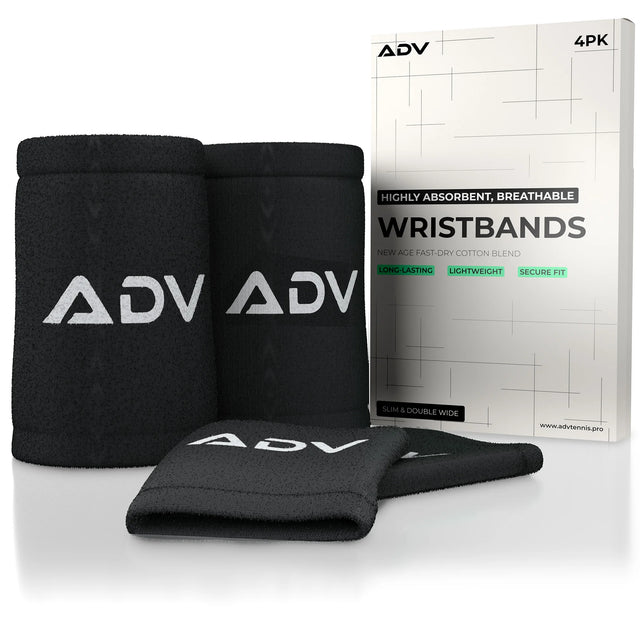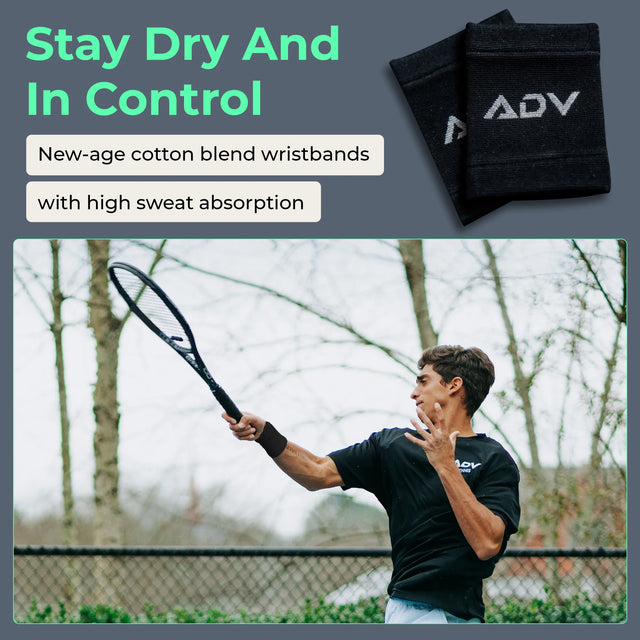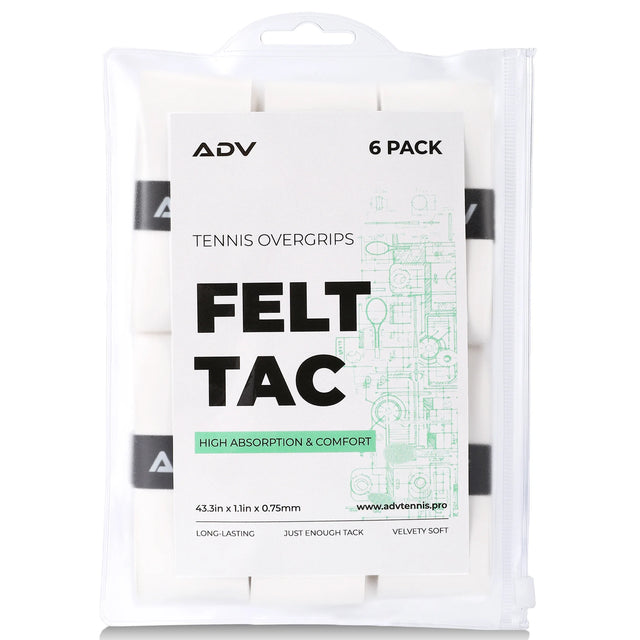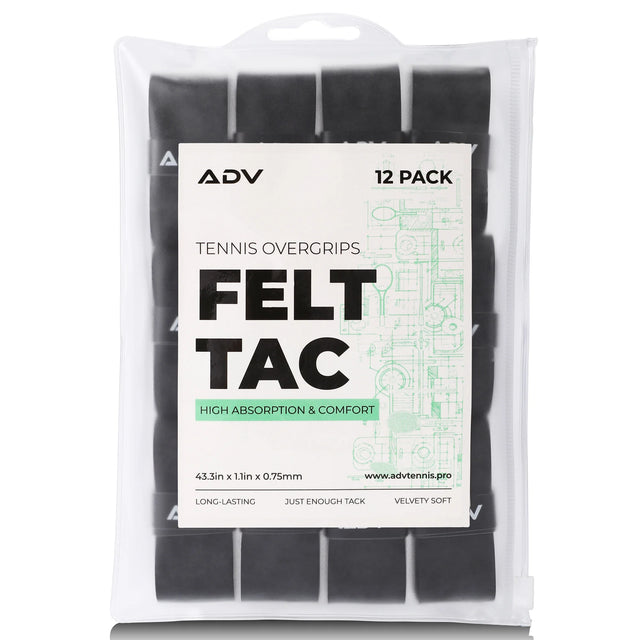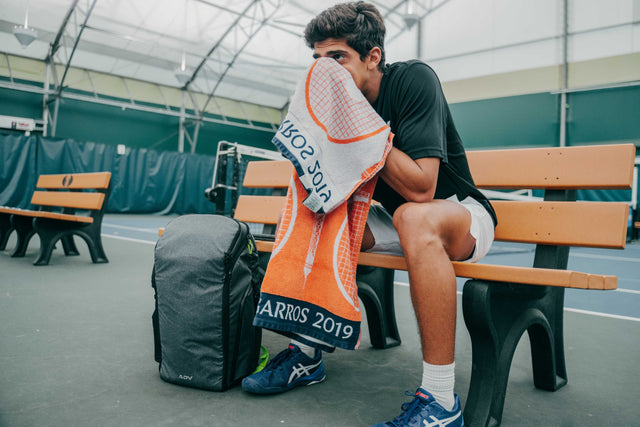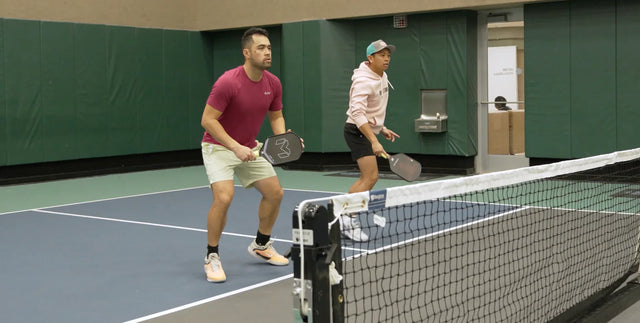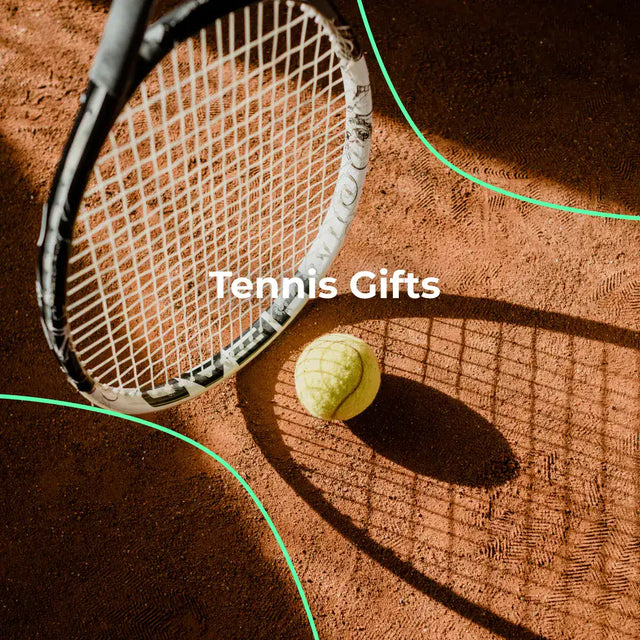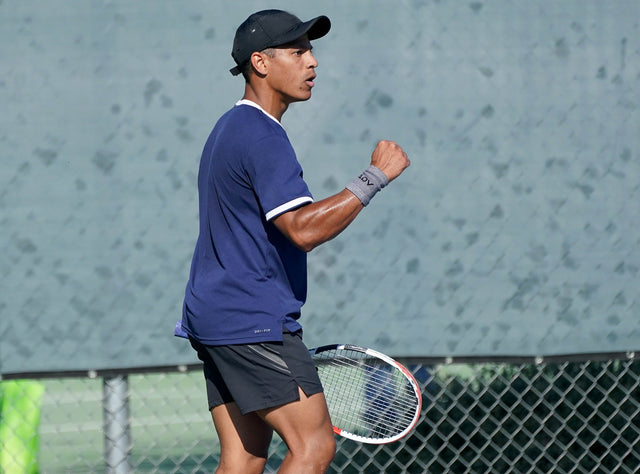A Beginner's Guide to Selecting Tennis Gear
Selecting the right tennis gear for beginners is crucial as it significantly affects your learning curve and enjoyment of the game. These players might feel overwhelmed by the array of equipment available, but choosing wisely can enhance their comfort and performance. The right gear helps prevent injuries and allows new players to develop skills efficiently. This blog post will help you understand the essentials and what to look for, ensuring that your introduction to tennis is enjoyable and rewarding.
Tennis Gear Specifications and Their Impact on Performance
Understanding the technical specifications and unique features of tennis gear is essential for anyone aiming to optimize their performance and enjoy the game to its fullest. Among the most critical specifications are racquet weight, balance, head size, frame stiffness, and string pattern—each playing a distinct role in shaping how a racquet feels and performs on the court. Racquet weight is a foundational attribute: lighter racquets are generally more maneuverable and easier to swing, making them ideal for beginners who are developing proper technique and seeking to avoid arm fatigue or injury. Conversely, heavier racquets provide greater stability and power, benefiting experienced players who can handle the additional mass and desire enhanced shot depth and control. Balance, which refers to the distribution of weight throughout the racquet, further tailors the playing experience. Head-heavy racquets shift more mass toward the racquet’s tip, generating additional power and momentum in groundstrokes—an advantage for baseline players who rely on forceful, deep shots. On the other hand, head-light racquets position more weight toward the handle, allowing for quicker reactions and finer control, which is particularly valuable during net play and fast volleys.
Head size is another important factor that directly influences both power and forgiveness. Larger head sizes (typically 100–115 square inches) offer a bigger sweet spot, making it easier to achieve powerful shots and minimize the impact of off-center hits—an appealing feature for beginners still mastering their swing. Smaller head sizes (below 100 square inches) provide increased precision and control, rewarding advanced players who consistently strike the ball cleanly. Frame stiffness also contributes to a racquet’s feel and playability. Stiffer frames tend to transfer more energy to the ball, resulting in higher power output, but may transmit more vibration to the arm. Flexible frames absorb more shock, offering a softer feel and greater control, which can help reduce the risk of injury for sensitive players. String pattern, defined by the number of main and cross strings, affects both spin and control. Open string patterns (such as 16x19) allow for more ball pocketing and spin generation, while denser patterns (like 18x20) provide a firmer response and enhanced directional control.
These technical details are not limited to racquets alone. Tennis strings themselves—ranging from natural gut and synthetic gut to polyester and multifilament—add another layer of customization, affecting power, control, spin, and comfort. Selecting the right combination of specifications ensures that your gear complements your playing style and physical capabilities. For example, a player seeking more power and forgiveness might opt for a lightweight, head-heavy racquet with a large head size and an open string pattern, paired with soft, multifilament strings. Meanwhile, a player prioritizing control and precision may choose a heavier, head-light racquet with a smaller head and denser string pattern, strung at higher tension for a more predictable response.

Choosing the Right Tennis Racquet
Understanding Racquet Weight
For beginners, the weight of a tennis racquet plays a crucial role in both developing proper technique and achieving overall comfort during play. Lighter racquets are generally recommended for beginners because they are easier to handle and swing. This ease of use helps in learning correct stroke mechanics without straining the arm or shoulder. It's important to start with a racquet that doesn’t overwhelm your physical capabilities, as this can lead to improved skills and reduced risk of injury.
Exploring the Best Tennis Racquet Brands
When venturing into tennis, selecting a racquet from a reputable brand can make a significant difference. Brands like ADV Tennis are renowned for producing some of the best tennis equipment that caters to new players. These brands offer models explicitly designed for novice players, focusing on ease of use, durability, and overall performance enhancement on the court.
Racquet Features to Look For
Other features can make a racquet more suitable for beginners. An oversized head, lighter weight, and thicker beam width are ideal features that enhance the forgiveness and usability of a racquet. Additionally, look for racquets that come pre-strung with softer tennis strings, which are easier on the arm. These characteristics ensure that new players can enjoy the game without feeling overwhelmed by their equipment.
Finding the Ideal Tennis Grip Size and Strings
How to Measure
Selecting the correct tennis racket grip sizes is essential for comfort and injury prevention. The right grip size enhances racket control and reduces the risk of tennis elbow. To determine your ideal grip size, measure from the middle crease of your palm to the tip of your ring finger. This measurement typically ranges between 4 and 4 5/8 inches. If you're between sizes, opting for the smaller size allows for more precise grip adjustments with overgrip tape, ensuring a snug, comfortable fit.
Types of Tennis Strings
Tennis strings play a vital role in the game, affecting everything from power and control to spin and feel. The choice of string can influence your performance significantly, making it a crucial aspect of essential tennis gear. Here’s an exploration of the various types of tennis strings and their impacts:
-
Natural Gut: Made from natural materials, they offer excellent responsiveness, allowing players to feel more connected to the ball. This string type is ideal for those looking for premium performance with minimal strain on the arm, as it has an inherent elasticity that absorbs shock well. However, natural gut is often more expensive than synthetic alternatives and is susceptible to breaking down in damp conditions. Despite its cost and sensitivity to moisture, many players consider it worth the investment for the unparalleled playability it provides.
-
Synthetic Gut: Synthetic gut strings offer a well-rounded combination of performance and durability at a more accessible price point than natural gut. Made from nylon, these strings deliver a consistent, all-around feel, which appeals to beginners and intermediate players who are looking for reliable playability across various conditions. Synthetic gut strings are not overly specialized in one area, making them a versatile choice for players who prioritize balance in their game
-
Polyester: Polyester strings are known for their durability and ability to generate spin, making them popular among players who hit with power and prefer a stiffer, more controlled response. These strings offer less elasticity, resulting in enhanced precision, which is ideal for advanced players who value control over comfort. Due to their stiffness, polyester strings are often less forgiving on the arm, potentially leading to discomfort or injury for those prone to tennis elbow. However, for hard hitters who rely on generating their own power, polyester strings provide a resilient and spin-friendly option that can elevate a player’s performance in competitive settings.
-
Multifilament: Designed to mimic the soft, flexible qualities of natural gut, multifilament strings consist of numerous filaments woven together, providing exceptional comfort and tension retention. These strings are especially suited for players seeking a gentle impact on their arm, as they absorb vibrations effectively and reduce shock. Multifilament strings offer a forgiving response, making them a great choice for players who prioritize comfort over maximum durability. While they may fray or break more easily than polyester strings, they offer a balance of playability and comfort that appeals to a wide range of players, particularly those who have experienced injuries or have sensitive arms.
-
Hybrid: Hybrid stringing combines two different types of strings, usually a durable polyester for the main strings and a softer synthetic or multifilament for the cross strings. This setup allows players to enjoy the benefits of both string types—durability from the polyester and comfort from the synthetic or multifilament—resulting in a balanced playing experience. Hybrid setups are ideal for players who want to customize their string bed to minimize potential drawbacks. Such a combination is popular among intermediate and advanced players looking for a personalized feel that enhances both performance and longevity.
Each type of string offers unique characteristics that cater to various needs. Whether you’re looking for a soft, responsive feel or a durable option that emphasizes control, understanding the differences can help you make a more informed decision that aligns with your goals on the court.

String Tension Tips for Power vs. Control
Lower tensions can increase the power of your shots as the strings have more give, creating a trampoline effect. Conversely, higher tensions offer better control as the tighter strings provide a more stable hitting surface. Beginners should start with a medium tension, which offers a good compromise between power and control, adjusting as you develop your preferences.
Matching Gear to Playing Style and Skill Level
Selecting tennis gear that aligns with your playing style, position, and skill level can dramatically enhance both your performance and enjoyment on the court. Net players or those who play doubles may prefer head-light racquets for greater maneuverability and quick reaction volleys. As your skills progress, you might transition to a racquet with a smaller head and heavier frame to gain more control and precision. As mentioned, string choice also plays a role—players seeking more spin or power may opt for polyester strings. Even footwear and apparel can be tailored to your style; aggressive movers might require shoes with extra lateral support and durable outsoles, while players who value speed could select lightweight shoes for rapid court coverage.
Essential Accessories for Beginners
Tennis Balls for Different Surfaces
The choice of tennis balls is pivotal, as different surfaces require different types of balls. For hard courts, opt for extra-duty felt balls that can withstand the abrasive nature of the court. For clay and indoor courts, regular-duty felt balls are preferable because they are less fluffy, which reduces the pickup of clay and provides consistent performance. Beginners should seek balls that are specifically labeled for the type of court they most frequently play on, ensuring optimal playability and durability.
Tennis Bags and Backpacks
Tennis backpacks come in various sizes, from compact options designed to carry just a couple of racquets and a few essentials to larger bags that can hold multiple racquets, shoes, balls, apparel, water bottles, and additional accessories like wristbands or overgrips. For those who play frequently or at a competitive level, a spacious bag with ample storage is essential to accommodate the increased amount of gear. Many tennis bags include specialized compartments to separate racquets from other items, helping prevent racquet frames and strings from getting damaged by sharp objects or hard surfaces. Some bags even feature a thermal lining within the racquet compartment to shield strings from temperature fluctuations, which can affect string tension and performance. The quality of the material is crucial as well; bags made from durable, water-resistant fabrics will better withstand wear and tear from outdoor use and provide reliable protection in varying weather conditions.
Many modern tennis bags feature padded straps and ergonomic designs, which help evenly distribute the bag's weight, making it easier to carry even when fully loaded. Bags with adjustable straps enable users to customize the fit, ensuring the bag rests comfortably against their body and reduces the risk of shoulder or back strain. For players who bring multiple racquets or heavy items, dual shoulder straps similar to those found on a backpack are highly beneficial, as they balance the load and minimize pressure on one side of the body.
Must-Have Extras
While the primary focus for any tennis player is often on rackets and balls, several additional accessories are essential for comfort and performance, especially for beginners who might spend long hours on the court under various conditions:
-
Sweatbands: Sweatbands are a small but essential accessory for any tennis player. Typically worn around the wrists or head, these bands help absorb sweat, preventing it from running down your arms or onto your face. This is particularly helpful during long matches or on hot days, as excess sweat can make it difficult to maintain a firm grip on the racket. Sweatbands also prevent sweat from irritating your eyes, improving focus and visibility. Available in various materials and designs, many sweatbands are made from moisture-wicking fabrics that stay dry longer, adding comfort and convenience.
-
Visors or Caps: Shielding your eyes with visors and caps reduces the need to squint, which improves your concentration and focus. These accessories help manage hair, keeping it away from your face and preventing it from obstructing your vision mid-play. Many tennis caps and visors are designed with breathable, lightweight materials that wick moisture, making them comfortable even on hot days. With adjustable fits and wide brims, they allow for full visibility while minimizing sun exposure, giving players a more controlled and comfortable experience on the court.
-
Sunscreen: For outdoor matches, sunscreen is an absolute must. Prolonged exposure to UV rays can lead to sunburn, skin damage, and long-term health risks, making it essential for players to protect exposed skin. Opting for a sport-specific sunscreen can ensure it withstands sweat and stays effective throughout intense play. Many sports formulas are also designed to resist dripping into your eyes, providing additional comfort and focus. Sunscreen should be applied 15-30 minutes before heading to the court and reapplied as needed. Not only does sunscreen keep your skin safe, but it also allows you to stay on the court longer without discomfort, supporting healthier, more enjoyable practice sessions and games.
-
Quality Sunglasses: High-quality sunglasses are more than just a fashion accessory on the tennis court—they protect your eyes from harmful UV rays and reduce glare, making it easier to keep your eye on the ball. Look for sport-specific sunglasses that offer a non-slip fit, ensuring they stay in place during active movement. These sunglasses often come with lenses that enhance contrast, helping players see the ball and surroundings clearly. With added UV protection, they reduce the risk of sun-related eye strain, and by minimizing squinting, they help prevent headaches and maintain concentration.
-
Comfortable Socks: Investing in high-quality athletic socks is essential for any tennis player. Good socks provide more than just basic comfort; they wick away moisture, reduce friction, and cushion your feet against the court’s impact. Tennis socks with reinforced heels and toes offer extra durability in high-stress areas, while moisture-wicking materials help keep your feet dry, preventing blisters. Some socks are designed with extra padding or compression features that provide additional arch support, enhancing comfort and stability.
Adding these accessories to your tennis routine ensures not only comfort and safety but also helps you maintain focus, stay protected, and perform at your best. From managing sweat to protecting against the elements, these must-have extras provide valuable benefits that elevate your overall experience on the court.
Tennis Apparel and Footwear Essentials
Breathable and Flexible Tennis Clothing
Comfortable tennis apparel that is breathable and flexible can significantly impact your performance and endurance on the court. Fabrics that wick moisture away from the body and allow for easy movement are ideal. Look for features like mesh panels that provide extra ventilation and materials that stretch without losing shape. These properties help maintain an optimal body temperature and comfort level during long matches or training sessions.

Finding Proper Footwear
The right tennis shoes are crucial for providing the support and agility needed to move effectively and safely on the court. Shoes designed specifically for tennis offer the lateral support necessary to handle quick changes of direction and extensive lateral movements typical in tennis. Ensure that the footwear has adequate cushioning to absorb shocks and a durable outsole that can withstand the wear and tear of frequent play on court surfaces. Good tennis shoes can also help prevent injuries associated with the sport, such as ankle sprains or joint stress.
Adhering to Tennis Dress Codes and Fashion
Tennis is a sport steeped in tradition, and adhering to dress codes is an important aspect that reflects respect for the game, its venues, and fellow players. Many tennis clubs and tournaments maintain specific attire rules, often emphasizing a polished, professional look. For example, clubs may require collared shirts, prohibit overly casual items such as T-shirts, and insist on clean, well-maintained attire. These dress codes are more than a matter of etiquette—they help preserve the sport’s longstanding values and ensure a cohesive, welcoming environment for all participants. Following these guidelines demonstrates a player’s understanding of the sport’s culture and respect for the shared spaces where matches are held.
However, adhering to dress codes does not mean sacrificing comfort or personal expression. Modern tennis apparel is thoughtfully designed to strike a balance between compliance, performance, and style. Advances in fabric technology have enabled the meeting of dress code requirements while also supporting athletic needs. Moisture-wicking materials, for example, keep players dry and comfortable during intense rallies, while breathable fabrics and mesh panels help regulate body temperature. Flexible textiles and tailored cuts ensure that clothing moves with the body, enabling unrestricted movement for serves, volleys, and quick sprints across the court. This focus on functionality means that players can maintain their best performance without feeling constrained by their attire.
At the same time, contemporary tennis fashion offers ample opportunities for players to express their individuality within the boundaries of dress codes. Today’s tennis clothing comes in a wide array of colors, patterns, and silhouettes, allowing players to curate a look that suits their personality and boosts their confidence. For instance, pleated skirts, tailored shorts, and performance tank tops are not only compliant with most dress codes but also embody a modern, stylish aesthetic. Brands have introduced innovative designs, such as asymmetrical skirts or tops with subtle detailing, that provide a fresh take on traditional tennis attire. These options enable players to stand out on the court while still honoring the sport’s requirements.
Ultimately, the key to selecting tennis attire lies in finding a harmonious balance between functionality and style. Players should prioritize clothing that satisfies club or tournament rules, supports athletic performance, and aligns with their personal taste. By doing so, they ensure they are both comfortable and confident, ready to perform at their best while presenting themselves in a manner that reflects the values and spirit of tennis. This thoughtful approach to tennis fashion not only enhances individual experience but also contributes to the overall atmosphere of respect and professionalism that defines the sport.
Best Practices for Maintaining and Caring for Tennis Clothing and Equipment
Proper maintenance and care of your tennis clothing and equipment are essential for ensuring both longevity and consistent, high-level performance on the court. Always wash tennis apparel in cold water with a mild detergent to preserve the integrity of moisture-wicking fabrics and prevent premature wear. Avoid using fabric softeners or bleach, as these can degrade the technical fibers that help keep you dry and comfortable during play. Air drying your clothing, rather than using high heat from a dryer, helps maintain elasticity and fit, especially for items like performance skirts or shirts with built-in stretch. For tennis shoes, regularly remove dirt and debris from the soles and upper material, and let them air out after each session to prevent odor and material breakdown. Store your shoes and clothing in a cool, dry place, away from direct sunlight, to avoid damage from heat and moisture.
Frequently Asked Questions About Tennis Gear
Here are answers to some of the most common questions and concerns to help you make informed and confident choices as you start your tennis journey.
What type of racquet is best for beginners?
A lightweight racquet with a head size between 100 and 115 square inches is ideal for beginners, as it offers a larger sweet spot, more power, and is easier to handle.
How do I know which grip size is right for me?
Measure from the middle crease of your palm to the tip of your ring finger. If you’re between sizes, choose the smaller one and add overgrip tape for a snug, comfortable fit.
What kind of tennis strings should I use as a new player?
Synthetic gut or multifilament strings are best for beginners, offering a balance of comfort, playability, and durability without being too harsh on the arm.
How important are tennis shoes compared to regular athletic shoes?
Tennis shoes are designed for lateral movement, grip, and court durability. They provide better support and injury prevention than regular athletic shoes, making them essential for safe play.
Do I need different tennis balls for different court surfaces?
Yes, use extra-duty balls for hard courts and regular-duty balls for clay or indoor courts. This ensures optimal performance and durability based on the playing surface.
What are the must-have accessories for new players?
Sweatbands, visors or caps, sunscreen, quality sunglasses, and comfortable socks help manage sweat, protect against sun exposure, and ensure foot comfort, all of which enhance your overall playing experience.
How often should I replace my tennis strings?
As a general rule, restring your racquet as many times per year as you play per week. Fraying, loss of tension, or decreased performance are signs that it’s time for new strings.
Is it necessary to buy a tennis-specific bag?
A tennis-specific bag offers compartments for racquets, shoes, and accessories, protecting your gear and making it easier to transport everything you need to the court.
Can I use regular workout clothes for tennis?
While you can, tennis-specific apparel is designed for breathability, flexibility, and moisture-wicking, providing better comfort and performance during play.
How do I choose the right tennis shoes for my feet?
Look for shoes that offer lateral support, cushioning, and a durable outsole suited to your main court surface. Ensure a snug but comfortable fit to prevent injuries.
It's essential to recognize that the quality of your must-have tennis equipment can profoundly influence your learning curve and confidence on the court. Invest in high-quality tennis racquets and equipment that can grow with you as you improve. Confidence on the court comes from preparation off the court, which includes building a tennis kit that supports your journey from the very start.

